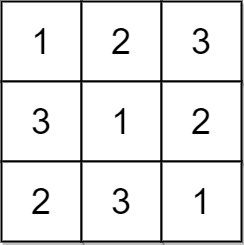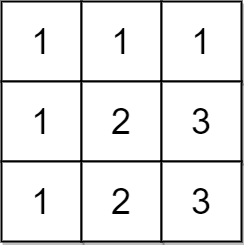An n x n matrix is valid if every row and every column contains all the integers from 1 to n (inclusive).
Given an n x n integer matrix matrix, return true if the matrix is valid. Otherwise, return false.
Example 1:
Input: matrix = [[1,2,3],[3,1,2],[2,3,1]]
Output: true
Explanation: In this case, n = 3, and every row and column contains the numbers 1, 2, and 3.
Hence, we return true.
Example 2:
Input: matrix = [[1,1,1],[1,2,3],[1,2,3]]
Output: false
Explanation: In this case, n = 3, but the first row and the first column do not contain the numbers 2 or 3.
Hence, we return false.
Constraints:
-
n == matrix.length == matrix[i].length -
1 <= n <= 100 -
1 <= matrix[i][j] <= n
SOLUTION:
class Solution:
def checkValid(self, matrix: List[List[int]]) -> bool:
n = len(matrix)
for i in range(n):
row = set(matrix[i])
col = set([matrix[j][i] for j in range(n)])
if len(row) != n or len(col) != n:
return False
return True




Top comments (0)